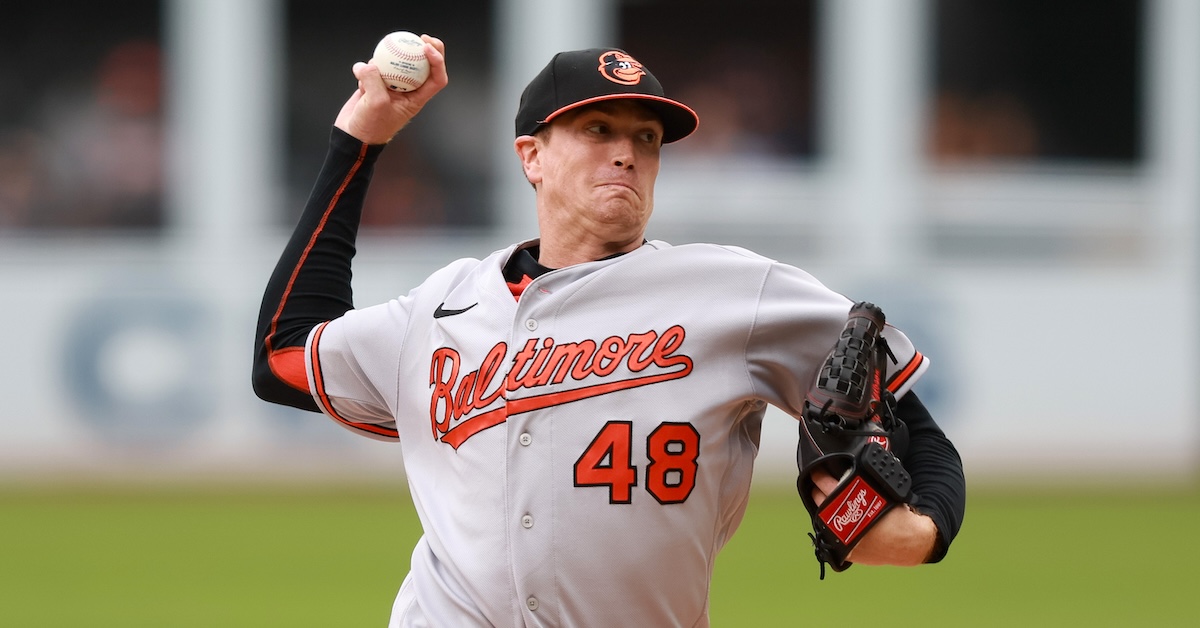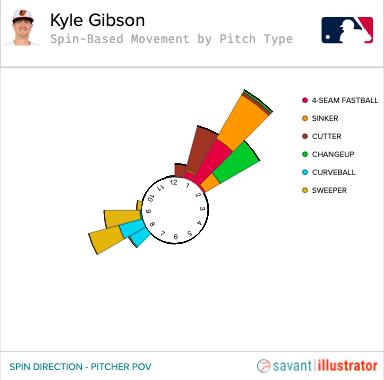
Aaron Josefczyk-USA TODAY Sports
The Cardinals’ 2023 season was disappointing, but it was anything but boring. The electric Jordan Walker cracked the Opening Day roster, tying a record for most games (12) with a hit to start a career for a player age 20 or younger. Then he went on to post what I can only assume (given the dearth of fielding statistics before 2000) is one of the worst defensive seasons by a rookie ever, costing St. Louis 16 runs per Defensive Runs Saved and 12 runs per Ultimate Zone Rating and Runs Above Average. Additionally, the Cardinals brought over veteran signal-caller Willson Contreras from the division-rival Cubs for $87.5 million, only to relegate him to DH and corner outfielder in May, then to just DH, before moving him back to catcher… all within the span of a week. And don’t even ask me, or Jack Flaherty for that matter, about the right-hander’s fastball velocity.
But Kyle Gibson is boring. Last year, the Cardinals were in the bottom 10 in baseball in ERA, FIP, xFIP, and SIERA, and at the General Managers Meetings a couple of weeks ago, Cardinals’ President of Baseball Operations John Mozeliak made clear the team’s desire to upgrade their pitching staff this offseason. But the Cards whiffed on Aaron Nola despite their early interest in the ace, and instead went with… Lance Lynn and Gibson?
Now, Gibson has his merits. As Leo Morgenstern notes in the very non-boring piece linked above, there’s obvious value in what the veteran provides: Even at 36, he can reasonably be counted on for 170ish average-ish innings. Since his full-season debut in 2014, he’s started more games than anyone else, and only Max Scherzer, Gerrit Cole, and Zack Greinke have covered more frames. Granted, of the top 65 pitchers in games started since 2014, only Patrick Corbin (4.54) has a higher ERA, but Gibson’s 4.48 mark isn’t bad at all. And if he can be counted on once every five days, that saves the Cardinals from calling up someone who might post an ERA in the 5.00s.
It’s unlikely that the veteran will hit another gear at this stage of his career; the Cards probably won’t get any more than what they paid for ($12 million, with a team option for 2025). But it’s worth noting that, after a pretty consistent pitch mix from 2014-20, Gibson’s repertoire has changed every season since. In 2021, he developed a cutter, and in 2022, he used it a lot more. His cutter continued to return value even with increased usage, but the rest of his pitches seemed to suffer as a result, and I pondered at the time what Gibson could do to find better pitch pairings.
Well, he found them in 2023. While the cutter itself was significantly worse by run value this season, that was offset by how well it paired with his sweeper, which Gibson used sparingly in 2022 but turned to 18.5% of the time in 2023. The right-hander notched whiffs on 23% of his sweepers, and the pitch’s success was due at least in part to how the cutter served as a bridge between the new offering and Gibson’s sinker by sitting in between their horizontal movements. Meanwhile, the sinker and sweeper worked well together by exhibiting a near-ideal (for the spin-mirroring effect) 7:15 spin-axis differential:

The one major downside to the sweeper is that it has more exaggerated platoon splits compared to a traditional slider. Gibson didn’t use it nearly as much against lefties, but perhaps he grew so accustomed to pitching off of it to righties that his process against southpaws wore down. If you discount 2020, lefties managed their best wOBA (.349) against Gibson since 2017 this past season. He does have a traditional slider too, and though he scrapped it entirely in 2023, it might be worth bringing back on occasion to use against opposite-handed hitters.
Yet even if he can maintain the sweeper’s success while neutralizing his platoon splits, any improvements at this stage of the veteran’s career are far more likely to stave off decline than turn him into an ace. But as long as he can continue to eat innings, Gibson serves as an apt counterweight to the other addition, or re-addition, to the Cardinals rotation this week. Whereas Gibson has never had an ERA below 3.62 or higher than 5.35 in 10 seasons since his full-season debut, Lynn has gone as low as 2.69 as recently as 2021 while going as high as 5.73 this past year. Maybe Lynn returns to form in his age-37 season and anchors the St. Louis rotation, but it’s equally likely that he’ll return to his 2023 form and be without a roster spot come summer.
The thing is, the Cardinals already had a pair like that in their rotation: Miles Mikolas and Steven Matz. They aren’t exactly alike — Mikolas doesn’t have the track record Gibson does and Matz hasn’t neared Lynn’s heights — but the same principles abide; Mikolas is a high-floor, low-ceiling innings-eater, while Matz is a volatile veteran who’s alternated between disaster and mid-rotation arm.
Those four don’t a playoff rotation make. As things stand, it wouldn’t get any better with the fifth spot, which would probably be filled by a work-in-progress type like Matthew Liberatore or Zach Thompson while top prospects Tink Hence and Tekoah Roby could use another year of seasoning. Mozeliak did say at the GM Meetings that the Cards needed to add at least two starters, and with just Gibson and Lynn in the bank as their first two reinforcements, fans should hope that the “at least” looms large.
Should they choose to add another starter, the Cardinals would have plenty of options. Nola was just the first domino to fall in a market flush with talent; while this year’s free agent position player class may be weak, Yoshinobu Yamamoto and Blake Snell headline a wealth of capable arms still available. If none of those appeal to St. Louis, perhaps due to monetary considerations, the team could leverage the weak position player class to float some of its own hitters in a trade for one of the many starters thought to be on the market — among them, Dylan Cease, Corbin Burnes, and Tyler Glasnow. After flirting with dealing from their glut of outfielders for a year, perhaps now is the moment the Cardinals have been waiting for.
So the jury’s still out on whether the Cardinals’ offseason, let alone their 2024 season, will be boring. But what’s clear is that they still have a lot of work to do in order to return to the perennial contention status that they’ve enjoyed for much of the 21st century.
Source
https://blogs.fangraphs.com/cardinals-ink-kyle-gibson-continue-steady-restructuring-of-rotation/
 Backyard GrillingWeekend WarriorsAdvice from DadBeard GroomingTV Shows for Guys4x4 Off-Road CarsMens FashionSports NewsAncient Archeology World NewsPrivacy PolicyTerms And Conditions
Backyard GrillingWeekend WarriorsAdvice from DadBeard GroomingTV Shows for Guys4x4 Off-Road CarsMens FashionSports NewsAncient Archeology World NewsPrivacy PolicyTerms And Conditions
